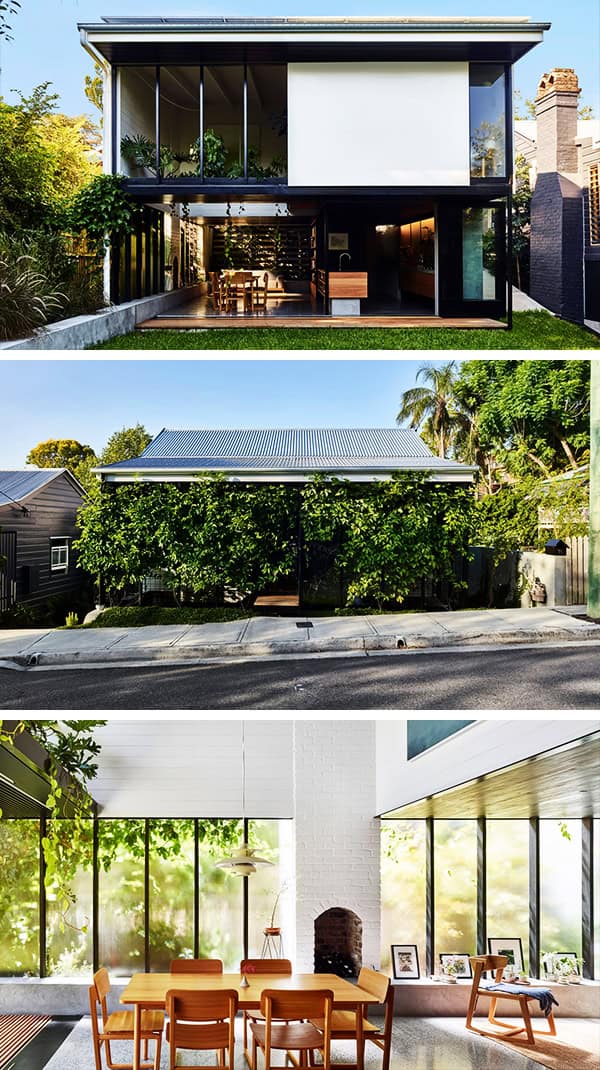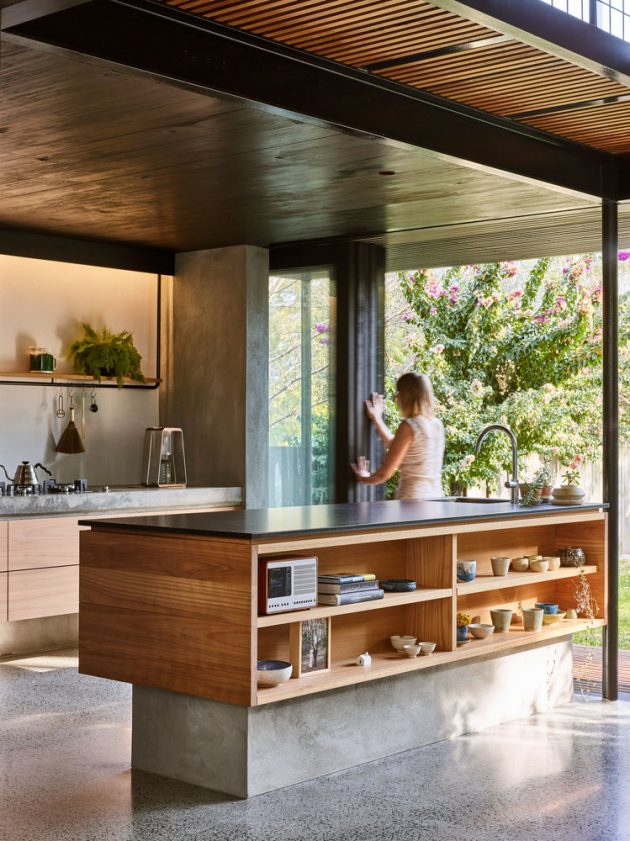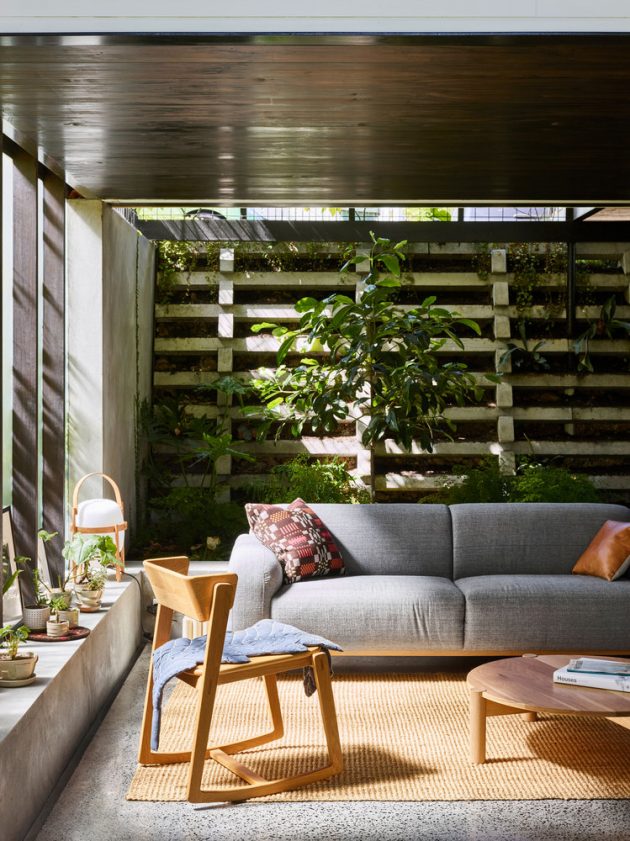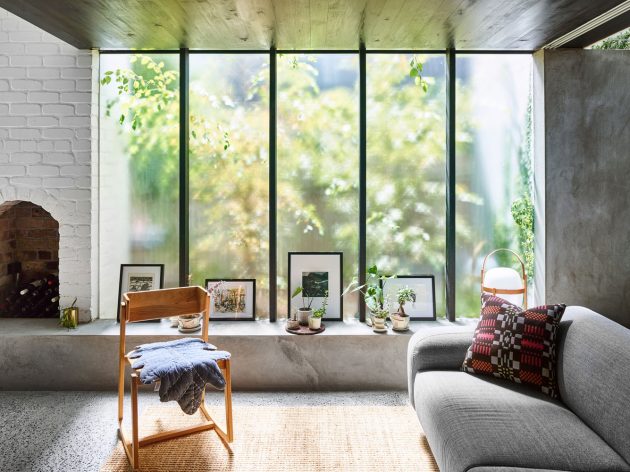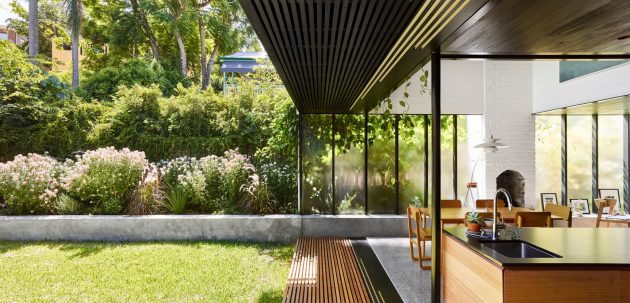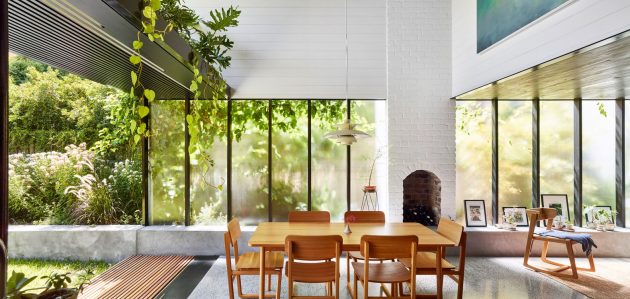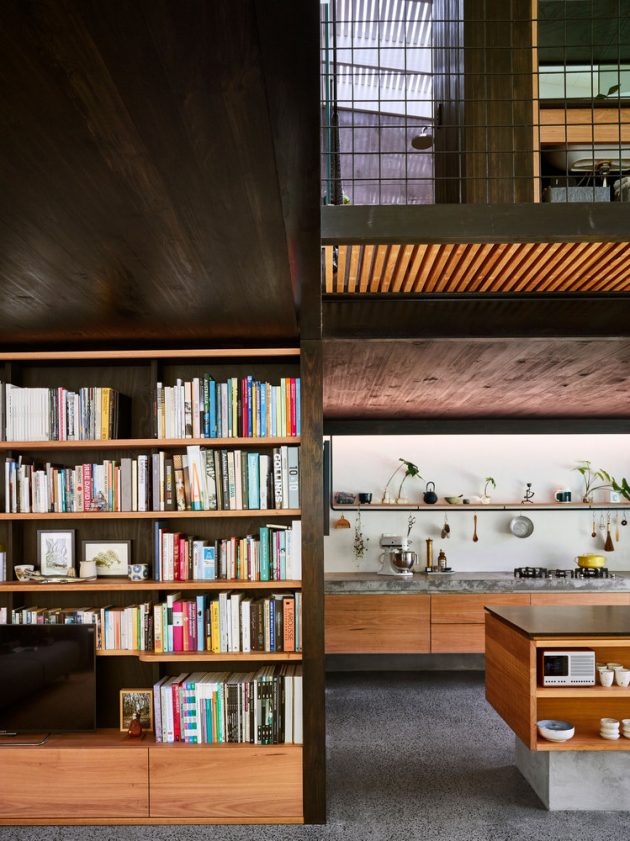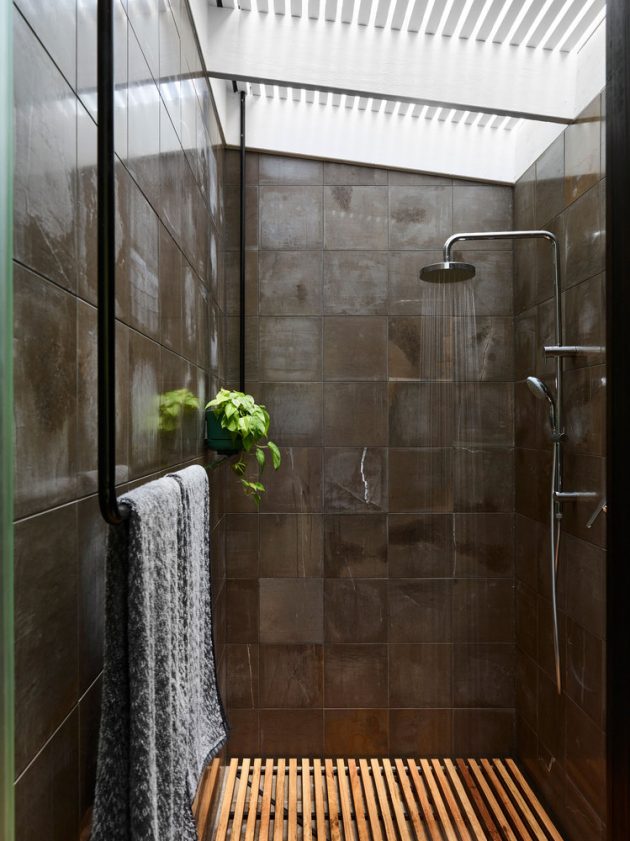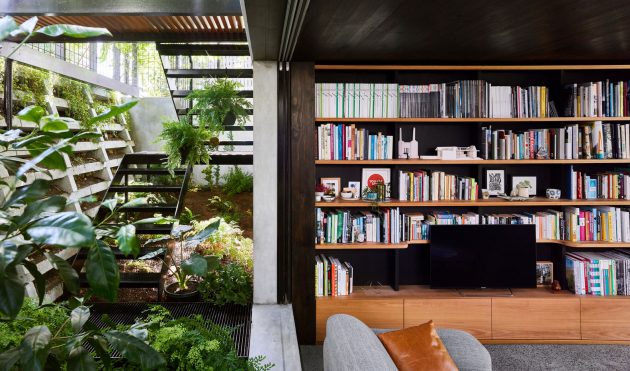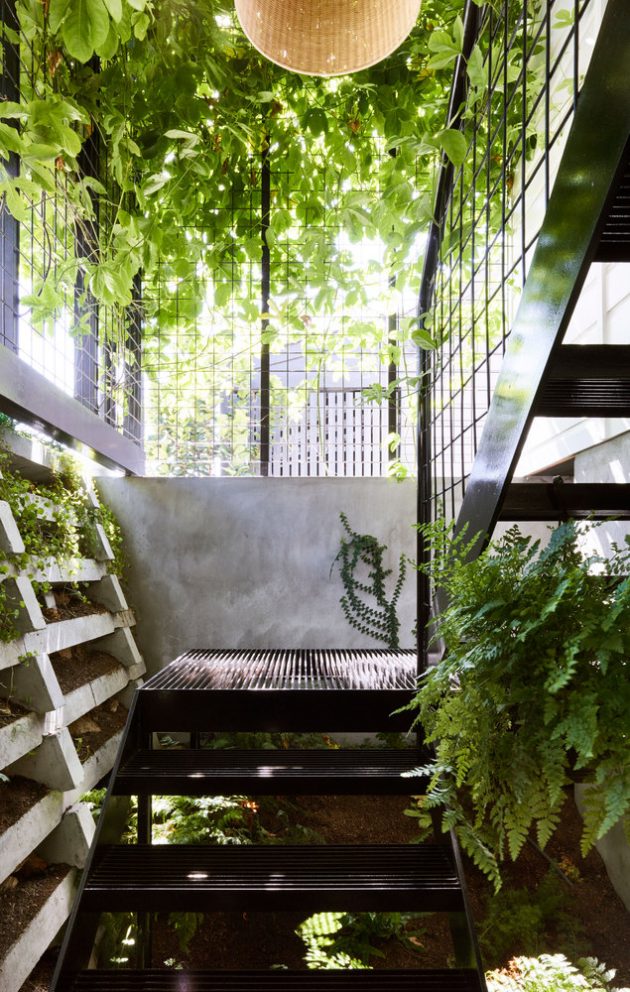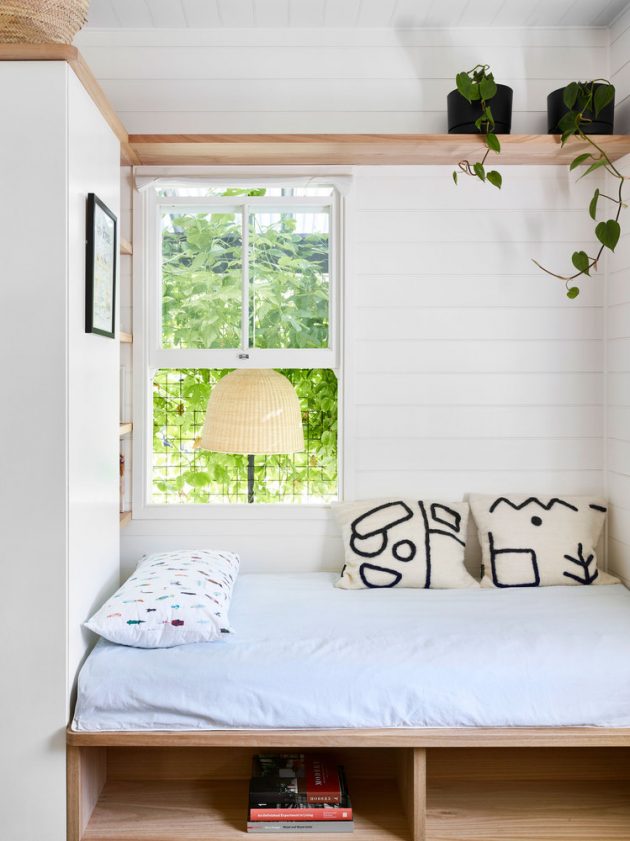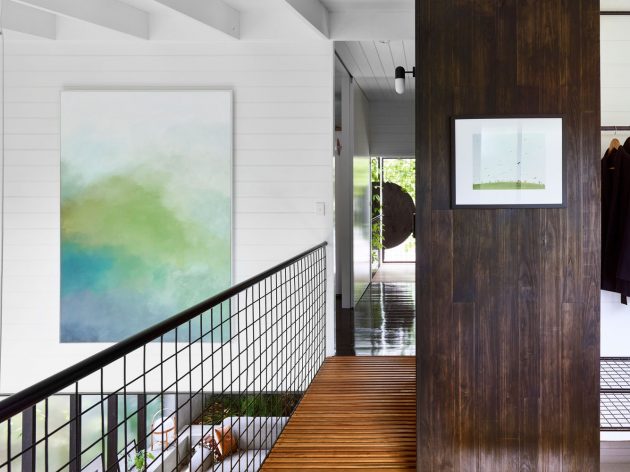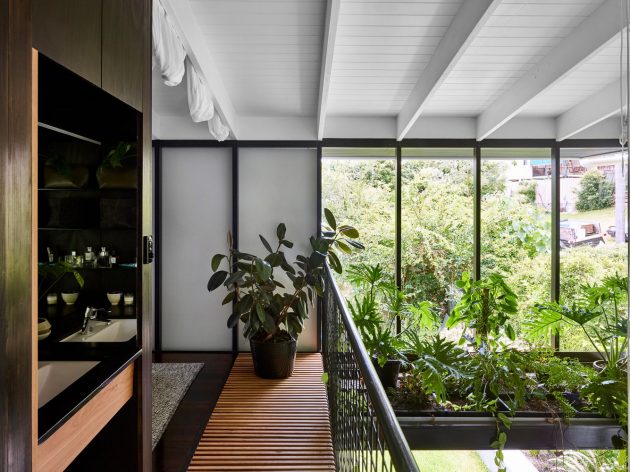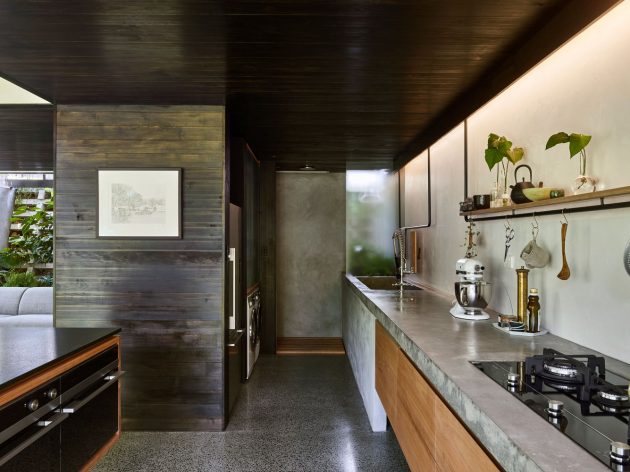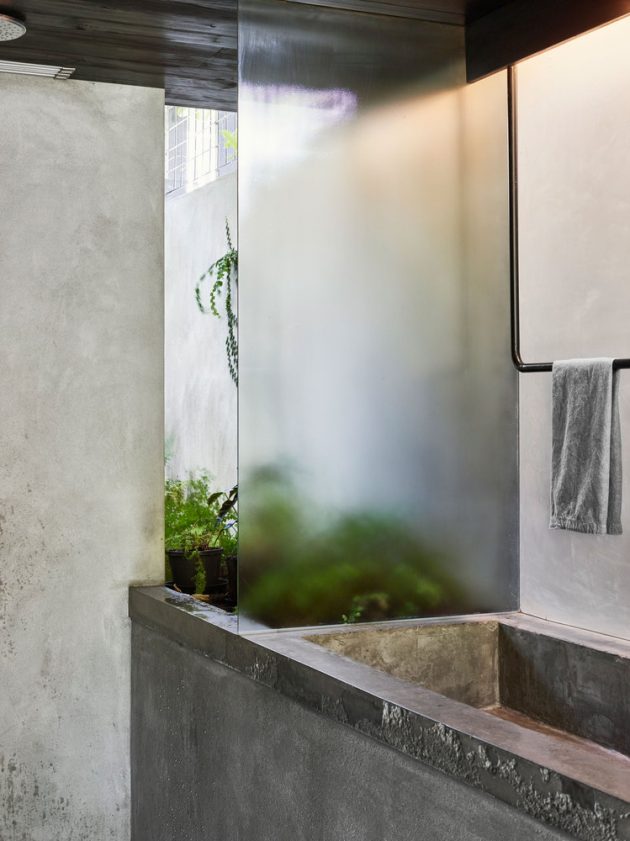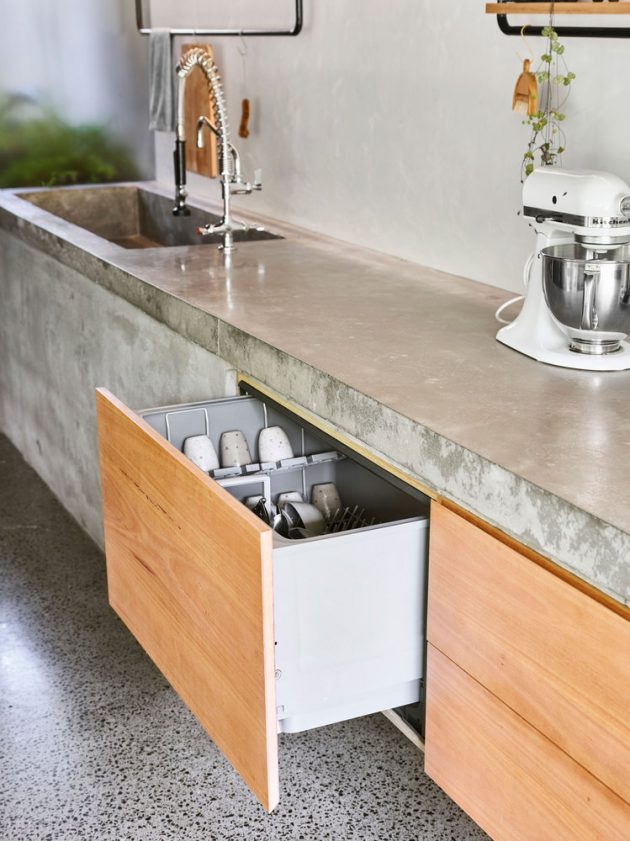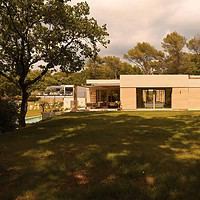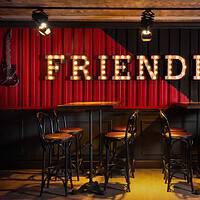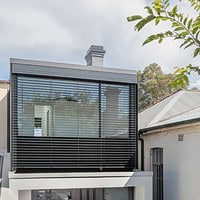Project: Terrarium House
Architects: John Ellway Architect
Location: Brisbane, Australia
Area: 1,291 sf
Photographs by: Toby Scott
Terrarium House by John Ellway Architect
The Terrarium House is an unsuspecting humble cottage sitting in Highgate Hill, Brisbane. It was designed by John Ellway Architect to seemingly look like an ordinary home. But underneath that early 1990’s facade is a minimalist, luxurious home with an open floor plan that strongly connects to the landscapes around it. All of that is hidden behind a lush vine barrier respecting the inhabitants’ privacy.
Terrarium House was created by bringing together layers of memories from the owners’ childhoods and their travels through adult life. It began as an exercise in pragmatics, managing problematic site conditions and a 100-year-old cottage crumbling into a backyard jungle.
Sitting halfway up the ridge of the inner-city Brisbane, the cottage’s backyard is oriented perfectly towards the north. Retained on the front boundary, the land falls around 2.5m from footpath to yard. The change in level means that the former one-bedroom cottage could grow by inhabiting the open under-croft below. The streetscape, and the cottage’s relationship to its twin neighbour, would remain intact without raising the house.
Entering from footpath into a private world through a secure vine-covered screen, the former front verandah now contains protected external stairs. A lush planted void draws you down the stairs to the living area below.
The lower level with laundry, bathroom, meals and lounge has been designed and detailed to conjure memories of the former shadowy under-croft. Black stained ceilings create compression as you enter from garden in the bottom of the front void. Concrete floors, rendered walls and perimeter ledge make you feel grounded, sitting ever so slightly below the garden level in a breezy cool under-croft, not sure if you are inside or out.
The lower level can be enclosed by timber framed sliding doors to the north and south, both of which, when open, become invisible, sliding behind external walls. A solid wall to the west protects the space from afternoon sun. Fine textured glass to the east captures winter morning sunlight, while the lush planting casts shadows and flickers dappled light into the living space. This is a space sitting in shadow allowing retreat from the intense Queensland light.
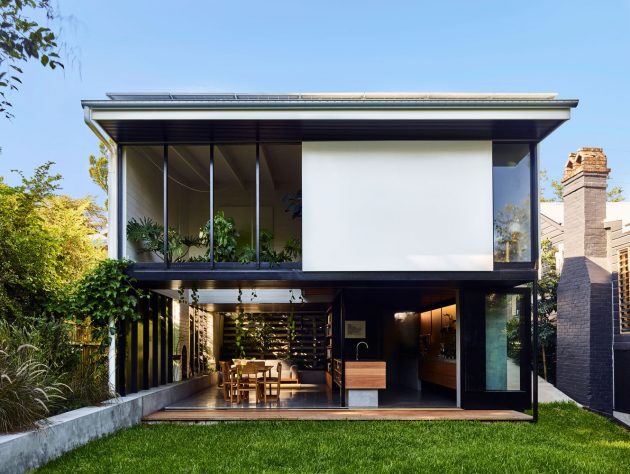
Above are the more private rooms of the house. Access is back up the protected external stairs and inside the original cottage door. The front two rooms open to a common hallway space, making a larger room for children to play and grow up together. For privacy, large floor-to-ceiling sliding panels can close separating, containing and creating a retreat space in these bedrooms.
Off the hallway is a shared bathroom with semi-transparent polycarbonate roof, letting in light and the sound of rain. The third bedroom sit adjacent to a large void in the rear north east corner of the house. The connection of the two levels enables chatter and activity. Passive surveillance and communication extends to the street from most parts of the house via glimpses through the vine-covered screen to walkers by.
From season to season the house can be adapted as required. In winter a large panel slides to enclose the rear void. In summer deep eaves protect the north from the sun. The large panel is left open allowing breezes to flow through the house and out though the screen to the street.

